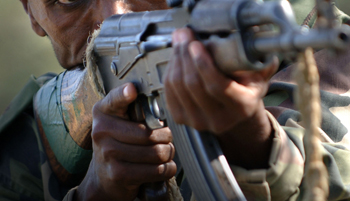 Prof Theo Neethling is conducting research on armed movements in the DRC.
Photo: en.wikipedia.org |
Prof Theo Neethling from the Department of Political Studies and Governance is currently conducting research on armed movements in the Democratic Republic of the Congo (DRC).
“My research is premised on the scholarly insight and argument that in weak states, such as the DRC, armed movements and militias are filling power vacuums that are the result of the inability and lack of military capacity to fight these movements effectively,” Prof Neethling says.
“In this context, the DRC is severely affected by sub-state terrorism,” he continues.
“This is a phenomenon that is intimately linked to the failure to effect sustained development and to consolidate accountable and effective governance in especially the eastern provinces of the country.”
Earlier this year, Prof Neethling presented conference papers on this topic at two international conferences: the Conference of the New York State Political Science Association, as well as the World International Studies Conference hosted in Frankfurt, Germany.
In 2013, Prof Neethling co-edited the book, ‘Post-Conflict Reconstruction and Development in Africa: Concepts, Policy, Role-players and Practice’. He completed this work in collaboration with Prof Heidi Hudson from the UFS Centre for Africa Studies.
“The book revolves around the concept of ‘post-conflict’ and the blurring of military and civilian roles, analysing the multiple roles of the United Nations in the DRC and Sierra Leone, as well as the African Union Mission in Burundi,” Prof Neethling says.
“It also explores South Africa’s foreign policy imperatives in relation to multinational peace missions in conflict-stricken African states, involving military as well as civilian role-players.”